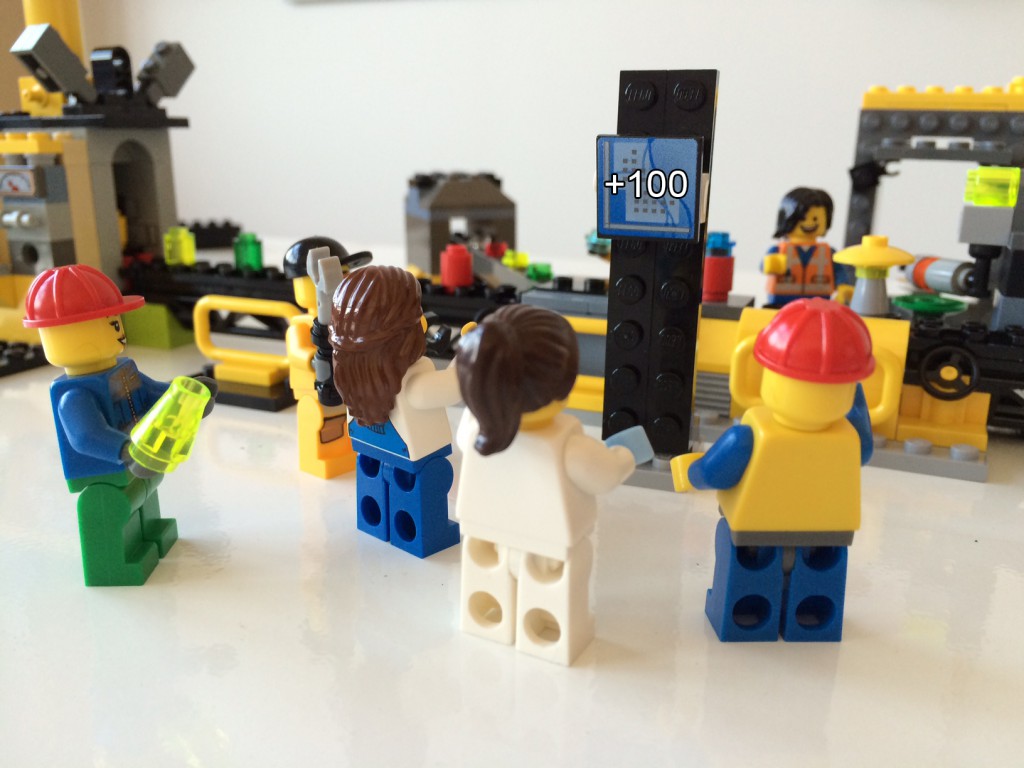Or at least, that’s what our study at Aarhus University found. Something had been bothering me for a while about gamification – both as a game scientist and as a psychologist trained in evidence based practice. All this talk of gamification involves a lot of hype and claims about game elements like badges, levels and achievements, but pundits never bother to dissociate the effects of each such mechanic. Would it make a difference if we removed, say, the leaderboards? What if we took all the game rules out? What if visually and verbally presenting something as a game is just as important as the game mechanics? Continue reading
Category Archives: Studies
Labour’s Love Won? Gamifying Industrial Production
Flow in Gamification
Flow – a state of optimal experience characterized being fully focused and engaged in an activity – has been regarded as one of the most important psychological outcomes of gamification and games. It is most commonly understood to comprise of nine dimensions: challenge-skill-balance, clear goals, control, (immediate) feedback, autotelic experience,loss of self-consciousness, time transformation, concentration, and merging action-awareness. Currently, there are few studies investigating flow particularly in the context of gamification (See Hamari, Koivisto & Sarsa, 2014) and therefore there is little knowledge as to which dimensions of flow would be especially emergent in the context of flow. To this end we conducted a two-fold study: 1) We investigated the salience of the different dimensions of flow in gamification and 2) the psychometric properties of the DFS-2 flow measurement instrument. Continue reading
Gamification Considered Harmful?
Points, levels and leaderboards are often perceived as the bread and butter of gamification. Gabe Zichermann and Christopher Cunningham (2011) even call them “the heart of any gaming system” and “an absolute requirement for all gamified systems”. Game designer Margaret Robertson (2011) on the other hand decries this practice as pointsification and deems it “the thing that is least essential to games”. Similarly, Chris Hecker (2010) warned game designers not to blindly resort to achievements (or points, levels and leaderboards for that matter), because they could stifle players’ intrinsic motivation, that is, their desire to engage with a game (or gamified service). Continue reading
Do Persuasive Technologies Persuade?

Gamification has become increasingly popular (Figure) and it is starting to establish itself as an independent vein of literature. However, gamification bears many similarities with other (somewhat scattered) conceptual developments. Perhaps the most analogous conceptual development is persuasive technology which, similarly to gamification, refers to technology being used to influence people’s psychological states and behavior. The differences are subtle; on the conceptual level, persuasive technology focuses more on social and communicative persuasion and attitude change (Fogg, 2002), whereas gamification centers more around invoking users’ (intrinsic) motivations (through gameful experiences and affordances – Huotari & Hamari, 2012). These similarities imply that research regarding the parallel developments most likely hold interesting findings also from the perspective of gamification. Continue reading
Demographic differences in perceived benefits from gamification
Everyone knows the blueprint of a common gamification attempt: badges, points and leaderboards for everyone (slightly exaggerating). Supposedly, a common belief is that there is a one-size-fits-all-solution that works for everyone. Consequently and probably with somewhat unwarranted expectations, popular sources (Gartner 2011; IEEE 2014) enthusiastically predict that organizations will increasingly adopt and implement gamification despite a lack of consistent body of empirical research studying the effects of gamification (see Hamari et al. 2014 for a literature reviews). Without knowledge of how different people react and perceive gamification, customizing, tailoring and targeting gamification solutions to different segments is difficult.
